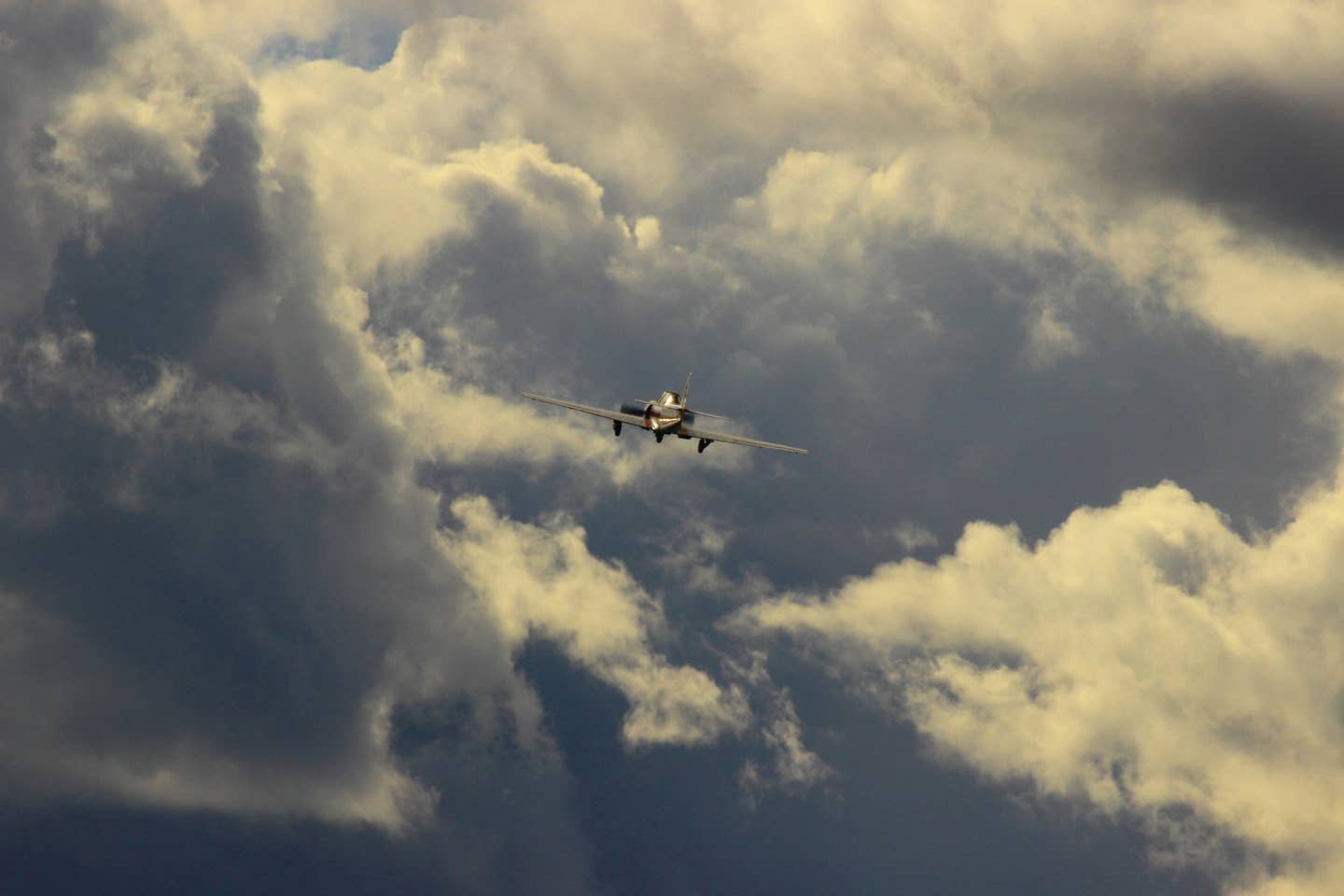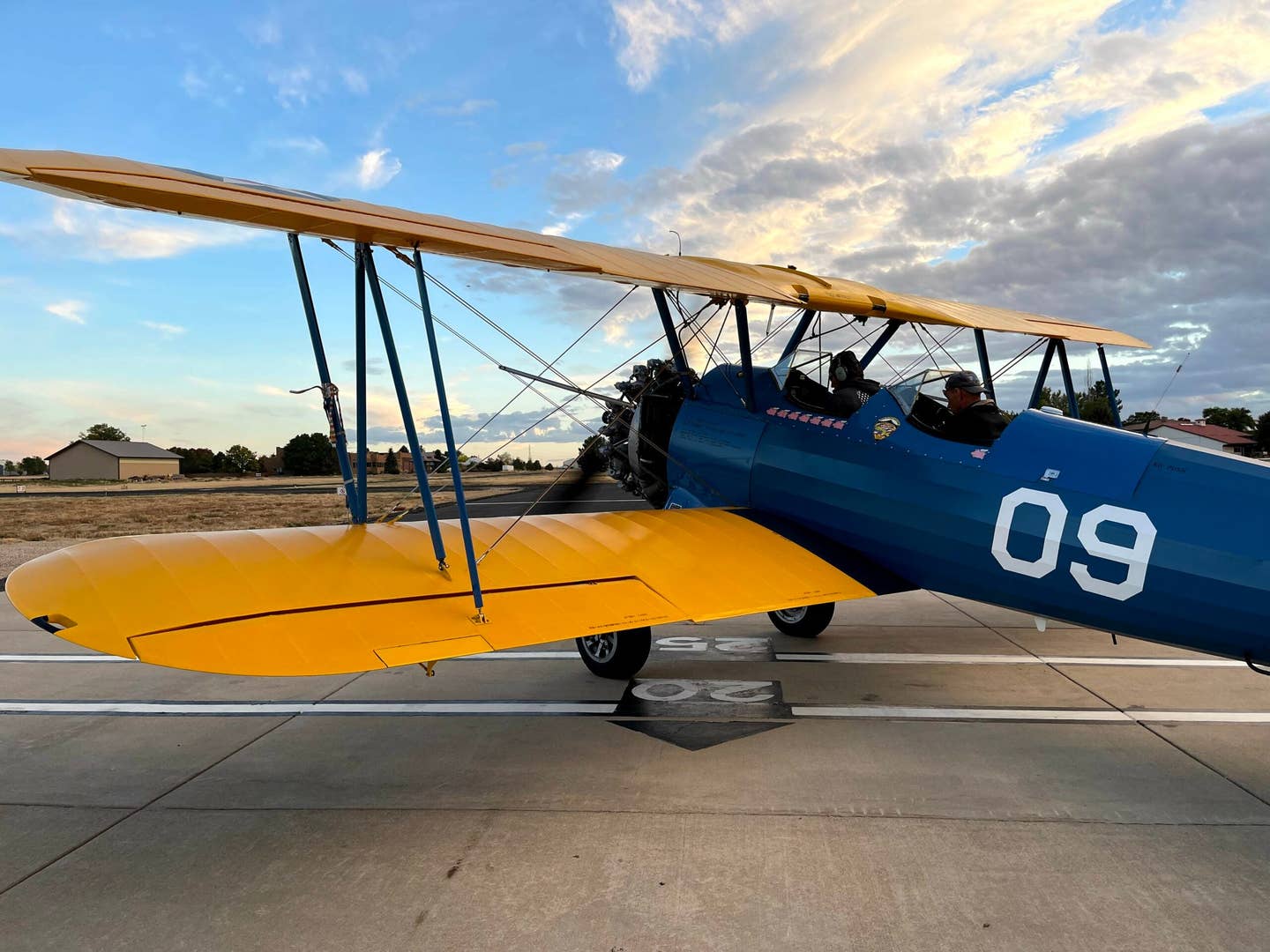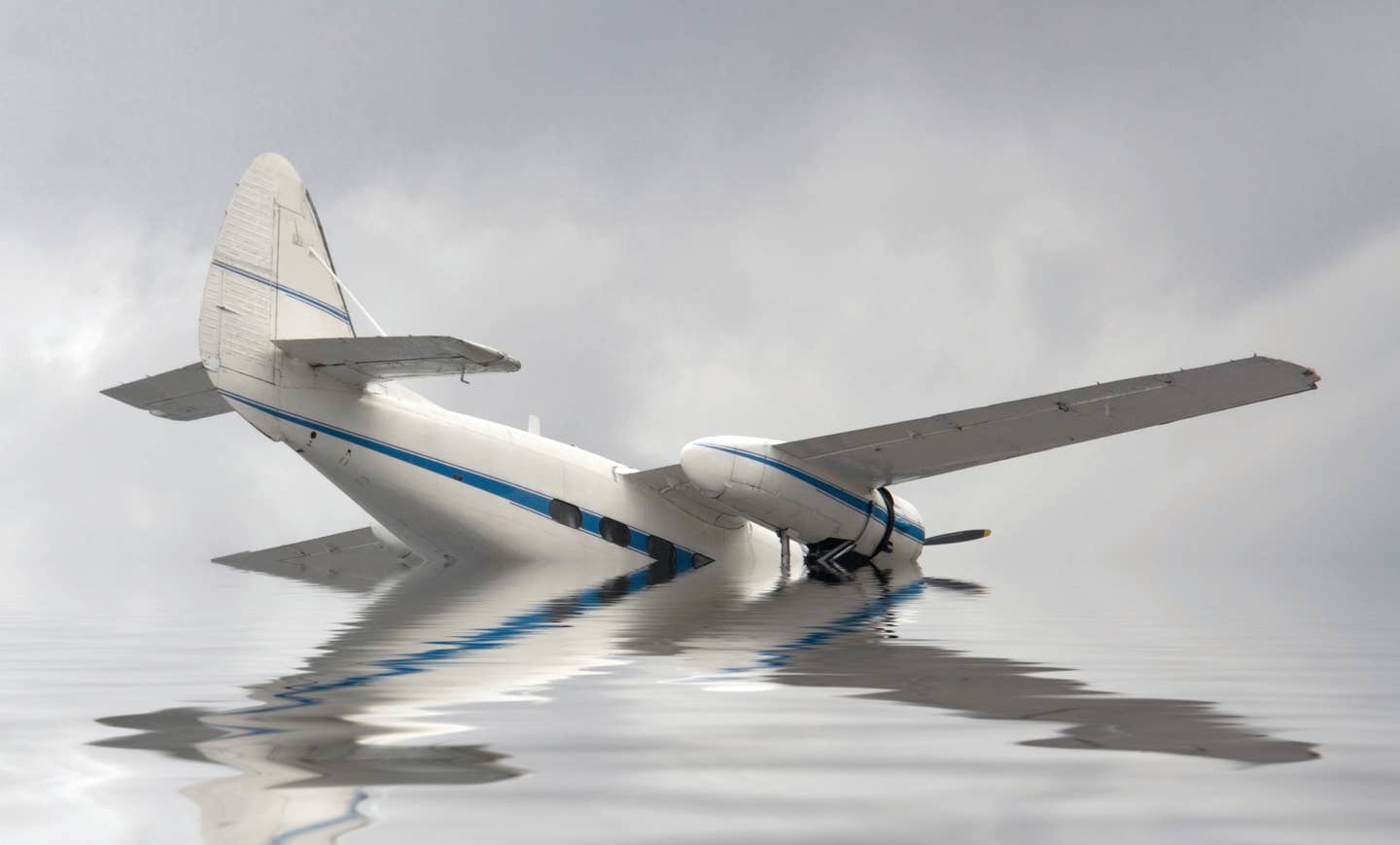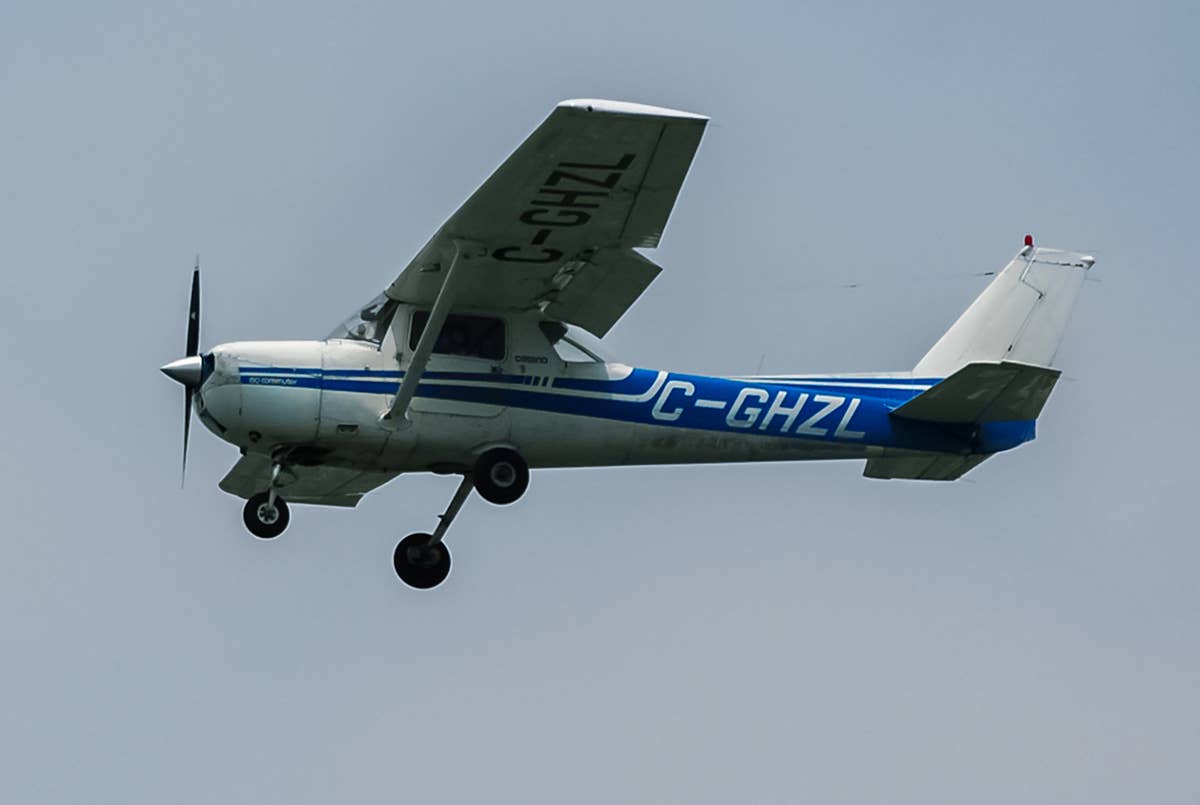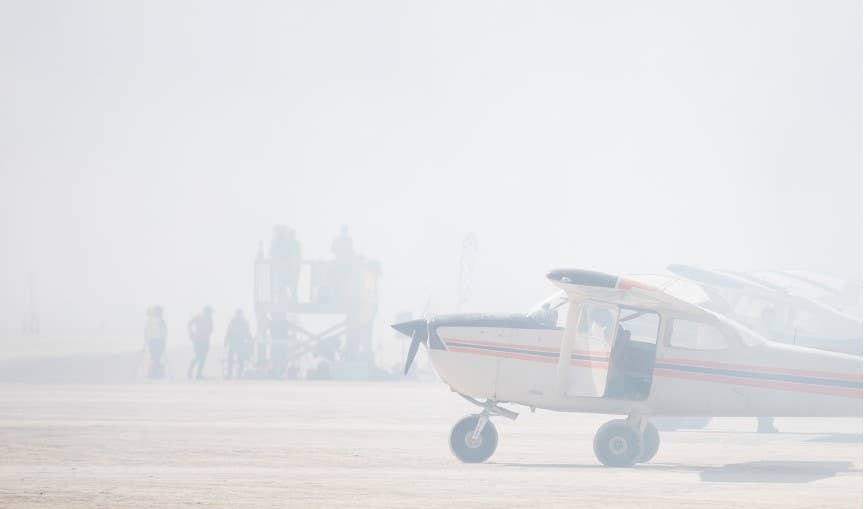A Night Flight Leads a Pilot to a Tragic End
Rather than reverse course, a former Marine continued to turn until he was heading into the dark unknown of bad weather in 2020.

About 25 minutes after takeoff and shortly after crossing the Arkansas border, a 31-year-old pilot, whose in-command time
amounted to 75 hours, lost control of a Cirrus SR22 and went down in a remote woodland. All aboard perished. [iStock]
Around 7 in the evening on September 4, 2020, the Muskogee, Oklahoma (KMKO), pilot-owner of a Cirrus SR22 telephoned his flight instructor to report he was going to fly to Pickens, South Carolina (KLQK), that night. His instructor advised him to wait until morning. Instead, the pilot fueled the airplane, loaded his father, wife, and child aboard, and took off at 8:27 p.m. for the four-hour flight.
As you will have guessed, since you are reading about this in Aftermath and not in I Learned About Flying From That, the flight did not end well. About 25 minutes after takeoff and shortly after crossing the Arkansas border, the 31-year-old pilot, whose in-command time amounted to 75 hours, lost control of the airplane and went down in a remote woodland. All aboard perished.
A few minutes before the impact, as he was climbing to 9,500 feet msl, the pilot contacted ATC and requested flight following. The weather along his route—which, notably, he had last checked with ForeFlight 17 hours earlier—was generally VFR, with a chance of scattered convective activity. There was, however, one patch of rainy weather just to the left of his course, and the controller advised him to turn right to avoid it.
If you're not already a subscriber, what are you waiting for? Subscribe today to get the issue as soon as it is released in either Print or Digital formats.
Subscribe NowOn the controller’s display, the target of the Cirrus crept eastward just below the edge of the weather. Radar paints rain, however, not cloud. The flight was over a remote area with few ground lights and the harvest moon had not yet risen, but its hidden glow may have faintly defined an eastern horizon. In the inspissated blackness of the night, the pilot, whose instrument experience was limited to what little was required for the private certificate, probably could not tell clear air from cloud.
As the Cirrus reached 9,500 feet, it began to turn to the left toward the area of weather. Perhaps the tasks of trimming and setting the mixture for cruise distracted the pilot from his heading. The controller noticed the change and pointed it out to the pilot, who replied he intended to return to Muskogee. He now began a turn to the right. Rather than reverse course, however, he continued the turn until he was heading northward back into the weather. The controller, who by now sensed trouble, said to the pilot that he showed him on a heading of 340 degrees and asked whether he concurred. The pilot, whose voice until this point had betrayed no sense of unease, replied somewhat incoherently that “the wind caught me, [but now] I’m out of it.”
With a tone of increasing urgency, the controller instructed the pilot to turn left to a heading of 270. The pilot acknowledged the instruction, but he did not comply. Instead, he continued turning to the right. At the same time, he was descending at an increasing rate and was now at 6,000 feet. “I show you losing serious altitude,” the controller said. “Level your wings if able and fly directly southbound...Add power if you can.”
It was already too late. In a turning dive, its speed increasing past 220 knots, the Cirrus continued downward. Moments later, its radar target disappeared.
In its discussion of the accident, the National Transportation Safety Board (NTSB) focused upon the pilot’s preparedness—in the broadest sense—for the flight. A former Marine, he should have been semper paratus—always ready—but his history suggested a headstrong personality with a certain tendency to ignore loose ends as he plunged ahead.
He had failed his first private pilot test on questions related to airplane systems; he passed on a retest the following week. But this little glitch tells us nothing about his airmanship. His instructor reported he responded calmly and reasonably to turbulence, and was “good” at simulated instrument flight. He had enrolled in Cirrus Embark transition training shortly before acquiring the airplane. He completed all of the flight training lessons, but—again, a hint of impatience with tiresome minutiae—may not have completed the online self-study lessons. The flight training was strictly VFR and did not include night or instrument components.
The airplane was extremely well equipped for instrument flying, but it was a 2001 model, and its avionics were, according to the Cirrus Embark instructors, “old technology” and “not easy to use.” In other words, it did not have a glass panel, and its classical instruments, which included a flight director, were sophisticated and possibly confusing to a novice. The airplane was equipped with an autopilot, and the pilot had been trained in at least the elements of its use.
The airplane was also equipped with an airframe parachute, but it was not deployed during the loss of control. In any case, its use is limited to indicated speeds below 133 kias, and it might not have functioned properly in a spiral dive.
- READ MORE: Dissecting a Tragedy in the Third Dimension
An instructor familiar with the pilot and his airplane—whether this was the same instructor as the one whom he called on the night of the fatal flight is not clear—wrote to the NTSB that the pilot had made the night flight to South Carolina at least once before, and he had called her at midnight before departing to come help him fix a flat tire. She declined and urged him to get some sleep and make the trip in the morning.
“I told him he was starting down the ‘accident chain,’” she wrote. “New pilot, new plane, late start, nighttime, bad terrain, etc....To me, he seemed a little overly self-confident in his piloting skills, but he didn’t know enough to know what he didn’t know.”
He fixed the tire himself and made the trip safely that night. Undoubtedly, that success encouraged him to go again.
We have seen over and over how capable pilots, including ones with much more experience than this pilot, fail to perform at their usual level when they encounter weather emergencies. A sudden, unexpected plunge into IMC—which, on a dark night, can happen very easily—opens the door to a Pandora’s box of fear, confusion, and disorientation for which training cannot prepare you.
There are two clear avenues of escape. One is the autopilot. Switch it on, take your hands off the controls, breathe, and count to 20. The fact the pilot did not take this step suggests how paralyzed his mental faculties may have become.
The other is the attitude indicator. It’s a simple mechanical game. Put the toy airplane on the horizon line and align the wings with it. That’s all. It’s so simple. Yet in a crisis, apparently, it’s terribly hard to do. The fact that so many pilots have lost control of their airplanes in IMC should be a warning to every noninstrument-rated pilot to treat clouds—and, above all, clouds in darkness—with extreme respect.
This column first appeared in the November 2023/Issue 943 of FLYING’s print edition.

Subscribe to Our Newsletter
Get the latest FLYING stories delivered directly to your inbox


